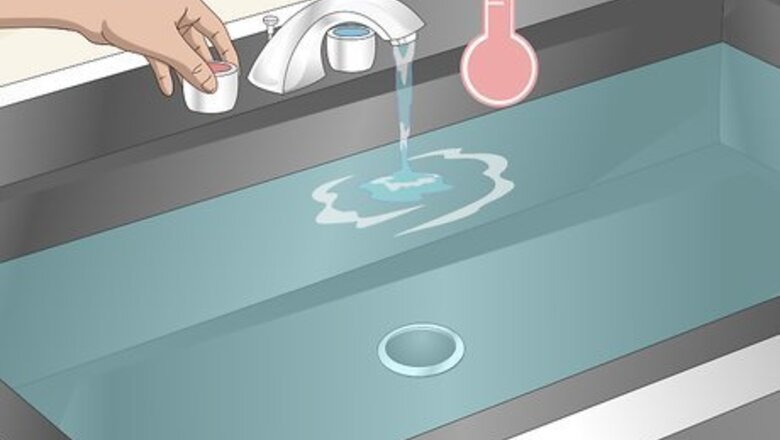
views
Soaking the Sheets

Fill a basin or sink with hot water. You can use a bucket, bathtub, clean kitchen sink, or any other container big enough for your sheets. Make sure that there is enough water to completely cover the sheets. The important thing is to treat the stain before you wash it.
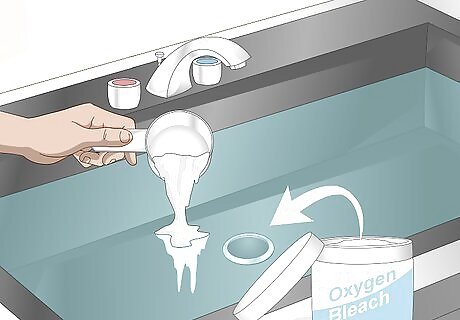
Add a scoop of oxygen bleach or borax to the water. Read the instructions on the side of the box for exact measurements. With a gloved hand, stir the water around to make sure that it mixes. You can also use 1 cup (240 ml) of white vinegar for every set of sheets that you wash. While not as powerful as borax or oxygen bleach, it is better if you want to remove any smells from your sheets.
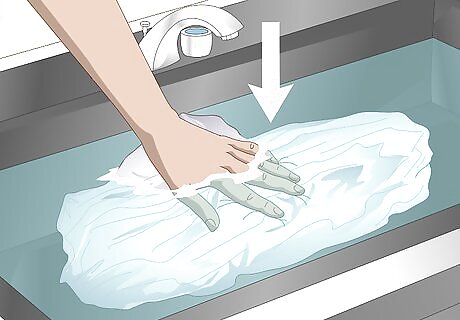
Submerge your sheets in the water completely. You can soak as many sheets as you have room for in your basin. Some smaller buckets and containers may only fit 1 sheet. Use your hands to press the sheets down under the water.
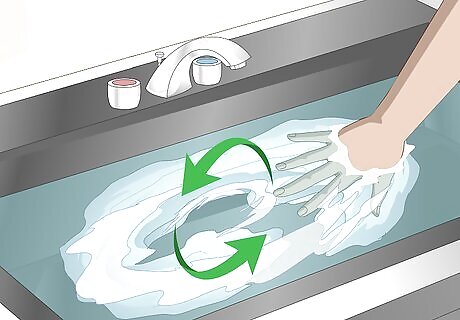
Agitate the sheets with your hands occasionally. Do this 3-4 times throughout the entire soaking process. Stir, press down, and squeeze the sheets to help clean them. Wear rubber gloves to protect your hands from the hot water. You might get a little wet if the water spills over the side. Agitate the sheets at least once when you first soak them and once at the end. Depending on how long you are leaving them to soak, you can agitate them 1-3 times more at regular intervals.
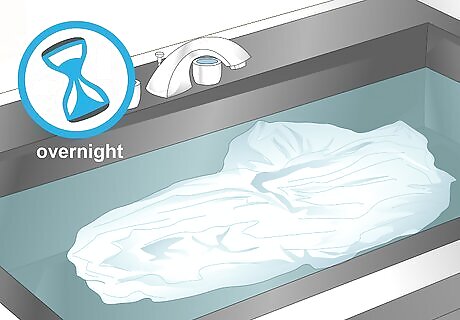
Leave the sheets to soak for between 1 hour and overnight. If the stains are particularly bad, leave the sheets for longer. If the time is up and the sheets still appear discolored, you may want to soak them for a while longer. You can leave them to soak for as long as they need to.

Wring the sheets out over a sink or tub. Make sure that you get rid of as much excess water as you can. The sheet should be damp but not dripping wet.
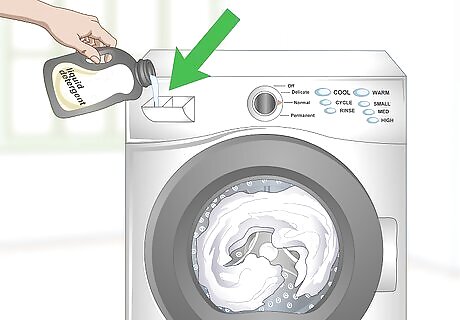
Wash the sheets in a washing machine. Use your normal laundry detergent. Set the machine to the same settings that you normally wash your sheets in. For washing instructions, check the label sewn into the hem of your sheets. If your sheets are white or a cream color, you can wash them with bleach.
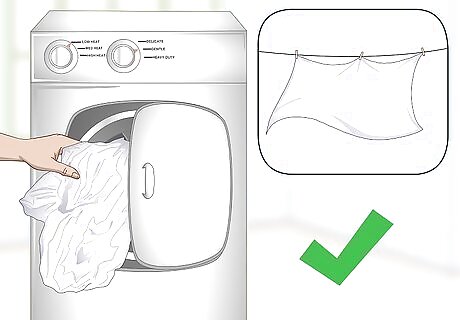
Dry the sheets in a dryer or on a hanging line. A dryer will quickly dry the sheets for you, but they may help set any remaining stains, making them harder to remove in the future. A hanging line will take longer, but it may be a better option for white sheets, which will naturally bleach and brighten under the sun. You can hang colored sheets to dry, but they may lighten in color slightly.
Oxygen Bleach or Borax
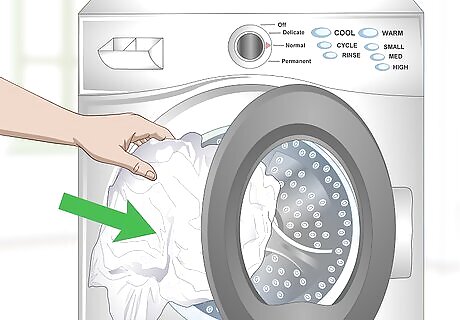
Put the sheets in the washing machine alone. Most sheets will fill up a machine easily on their own. Furthermore, it may be easier to get rid of stains if you just focus on your sheets.
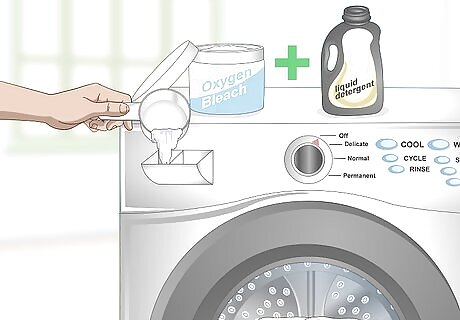
Add borax or oxygen bleach with your normal laundry detergent. Read the instructions on the side of the box to see how much you should add to the machine based on the size of your load. You can buy borax and oxygen bleach (such as Oxi Clean) at a grocery store. Do not use chlorine bleach (such as Clorox) on your sheets. Chlorine bleach can react with sweat and other bodily fluids, causing your stains to become more discolored.

Wash fresh stains in cold water and old stains in hot water. If the stains are new, choose a cold water setting. Hot water could set the stains. If the stains are older, choose the hottest setting that your sheets can handle. Since the older stains are already set, the hot water will help wash them more thoroughly. The laundry tag on the hem of the sheets should tell you how hot the water can be for your sheets.

Run the machine on a normal cycle. Depending on your machine, this might be called a “normal,” “regular,” “whites,” or “cotton cycle.” If you have a pre-wash setting on your machine, turn it on to soak the sheets before the cycle begins. This will help get rid of the stains.
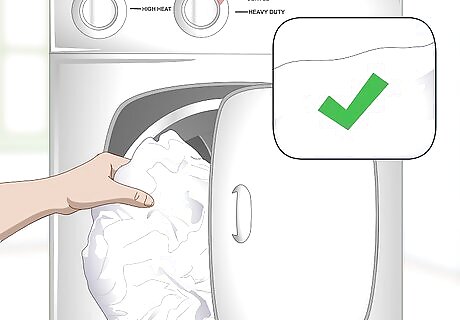
Put the sheets in the dryer if the stains are gone. Only put the sheets in the dryer if the stains have been completely removed. If you still have sweat stains, run the sheets through the laundry machine again. The heat from the dryer can make any remaining stains more stubborn. You can also hang the sheets to dry on a clothesline to prevent any remaining stains from setting.
Baking Soda and Vinegar
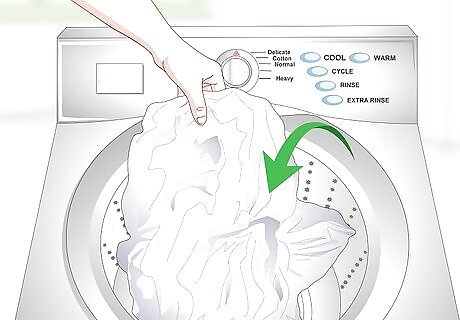
Put the sheets in the washing machine. Take off all of the sheets that have been stained with sweat. You can wash these in the washing machine using baking soda and vinegar. Do not wash your sheets with other clothing or linens.

Add your normal laundry detergent with 1/2 cup (90 g) of baking soda. Read the side of your detergent to see how much detergent you need to add. After pouring the detergent in, add the baking soda. This amount of baking soda should be just right for most loads of sheets. Because of the way that baking soda can foam and react, avoid adding more than 1/2 cup to any load.
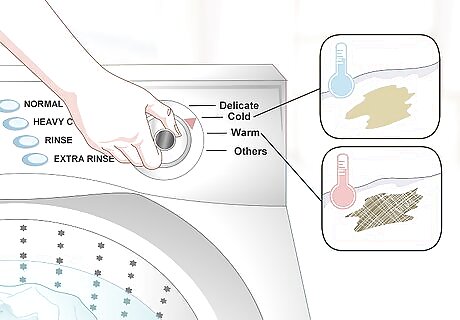
Use cold water for fresh stains and hot water for old stains. Use the dial on your laundry machine to set the water temperature to the right level. If you are using hot water, check the label on your sheets to learn the hottest temperature your sheets can handle. For newer stains, cold water will prevent them from setting in the fabric. Older stains are already set in the fabric. Thus, hot water will be more effective at getting them out.
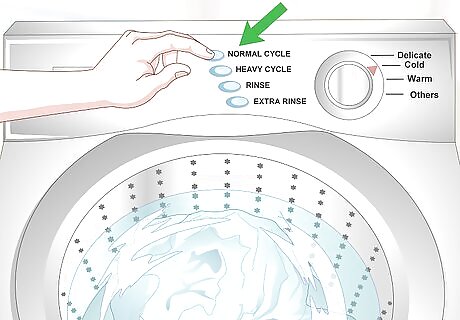
Run the machine on a normal or regular cycle. Set the dial or buttons on your machine for the normal cycle. If your sheets have special care instructions (which can be found on the tag on the hem), be sure to follow those instructions instead.
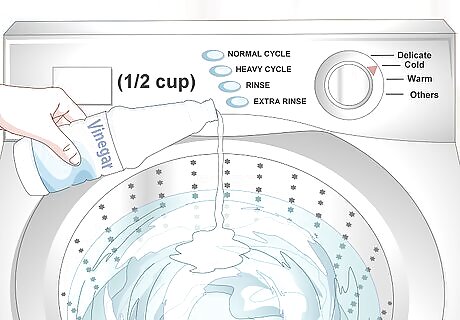
Add 1/2 cup (120 ml) of white vinegar when the rinse cycle begins. Most machines will tell you when the rinse cycle begins by pointing a dial towards “rinse” or by turning on a light under “rinse.” The vinegar smell will wash out by the end of the cycle. If you have a top-loading machine, open the door and pour the vinegar in. If you have a front-loading machine, open the dispenser on the top and add the vinegar. Some machines may lock the doors or dispensers while the machine is on. In this case, add the vinegar at the beginning of the cycle or choose another method. This amount of vinegar will cover most loads of sheets, although you may double the vinegar for very large loads with multiple sets of sheets.

Check the color of the sheets before putting them in the dryer. The sheets should have returned to their normal color. Once they are the right color, you can put them in the dryer. If they are still stained, run them through the wash again. If you have white sheets, try hanging the sheets out to dry in the sun. The sun will naturally bleach your sheets, helping you remove any last traces of sweat. You can also hang colored sheets, but they may lighten slightly in the sun.
Bluing White Sheets
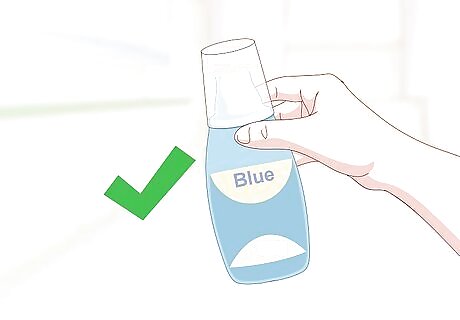
Buy a bluing agent at a grocery store or online. Popular brands include Bluette, Reckitt’s Blue, and Mrs. Stewart’s Liquid Bluing, but you can find a variety of bluing agents both in a store and online. These agents will make your sheets whiter by canceling out the yellow stains.
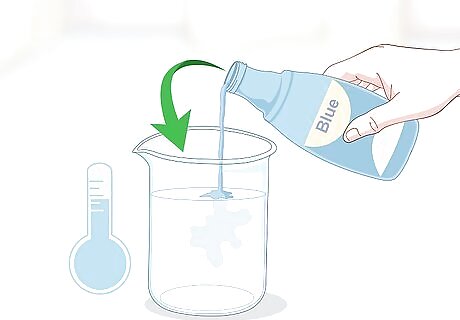
Dilute the bluing agent in cold water according to the instructions on the package. Since concentrations can vary between brands, always read the instructions before adding the bluing agent. Mix the water and the bluing agent in a clean bowl or measuring cup.
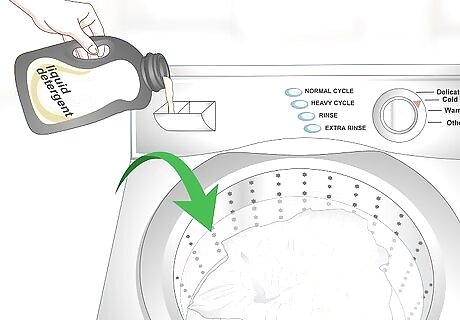
Wash your sheets in the laundry machine with your normal detergent. Set the machine to a cold water setting. Do not add the bluing agent yet. Wash the sheets as you usually do. For washing instructions, check the label on the hem of your sheets.
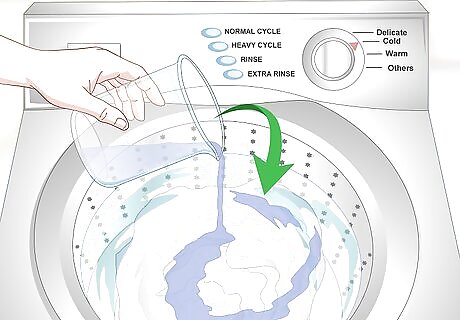
Add in the bluing agent when the cycle reaches the rinse cycle. If you have a top-loading washing machine, open up the top and pour the bluing agent in. If you have a front-loading washing machine, add it to the dispenser at the top of your machine. If your machine locks the dispenser or door while the machine is in use, you may need to add the bluing agent before you start the wash.
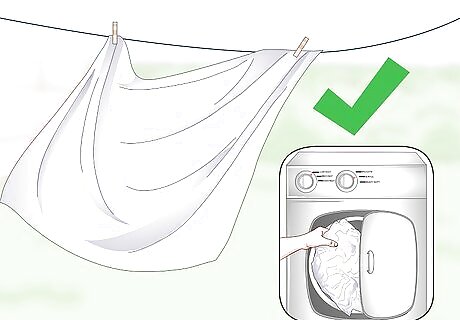
Dry the sheets in a dryer or on a clothesline. A dryer will quickly dry the sheets, but it can cause any remaining stains to set. A hanging line, on the other hand, will naturally bleach and whiten the sheets, although it will take much longer for the sheets to dry. Bluing agents can occasionally cause blue streaks on your sheets. If this happens, do not dry the sheets. Soak them in 1 quart (950 ml) of cold water and ½ cup (118 ml) of household ammonia for 24 hours before washing them normally in the washing machine.




















Comments
0 comment